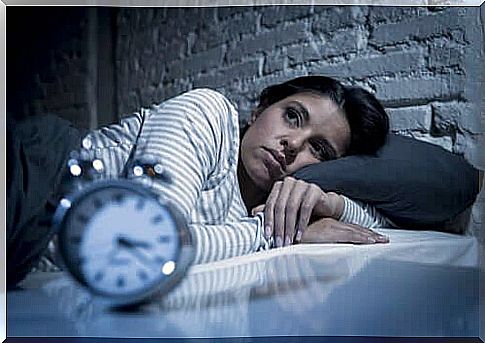The Delayed Sleep Phase Syndrome

People with delayed sleep phase syndrome cannot adapt to socially established sleep-wake schedules. Due to the lack of information and understanding of this condition, people around them often view them as lazy.
The sleep-wake pattern follows a circadian rhythm; that is, it fluctuates regularly every 24 hours. An internal biological clock determines this vibration and certain external synchronizers help with this.
Social elements, such as working hours or meals, serve to more accurately adjust sleeping and waking hours. However, the most powerful external synchronizer is the light-dark cycle.
The problem arises when there is a mismatch between the body’s circadian system and the demands of one’s environment. In the case of delayed sleep phase syndrome, a person’s usual nighttime sleep period is lagging behind the standard time.

People with this condition have the need to lie down and get up at least two hours later (chronically) than the rest. This delay is more common during adolescence. However, the prevalence in adults is significant.
When the daily tasks force these types of people to follow a standard schedule, they will become chronically sleep deprived because they cannot fall asleep at the specific time such schedule dictates.
Thus, this translates into drowsiness and fatigue during the day that will affect the school and work performance of those who suffer from this condition.
During holidays or days off where they can freely choose and postpone their sleep schedules, it becomes adequate in both quantity and quality. Insomnia and difficulty getting up both disappear and the person in question enjoys a good night’s sleep.
Differential features of delayed sleep phase syndrome
Some of the most common features of delayed sleep phase syndrome are:
- The person in question may have good sleep hygiene but still cannot sleep at the desired time.
- There are no personal or work situations or anxious depressive symptoms that could prevent a person from falling asleep.
- Once the person with this syndrome falls asleep, this person has no trouble staying asleep. They sleep continuously and do not wake up (which would be a sign of nighttime insomnia).
- Sleep deprivation causes drowsiness and a decrease in alertness during the first half of the day. This situation improves as the maximum watch point approaches, which for these people is near sunset.
- If a person with this condition can choose the desired hours, he or she will fall asleep without any problems and wake up rested.
Treatment of delayed sleep phase syndrome
Behavioral intervention
The first step is an intervention in a person’s habitual behavior. They should try to maintain the best possible sleep hygiene and take care of the environment in which they sleep. They should also avoid the use of stimulants and be aware of the type of activities they do before bedtime.
In this regard, the utmost importance is that the affected person has a fixed sleep schedule. They should follow this schedule every day without changing it during holidays or days off. They should maintain this habit even after reaching their goal to avoid relapse.
Phototherapy in delayed sleep phase syndrome
Reducing light exposure at dusk and increasing it in the morning can also bring about a breakthrough in their biological clocks. To do this, it is important that they use little light during the last hours of the day and open curtains or blinds.
So they have to sleep without curtains or blinds so that they are more exposed to sunlight in the minutes following the time they need to wake up.

Melatonin to Treat Delayed Sleep Phase Syndrome
Administering melatonin (1-5 mg) a few hours before bedtime promotes the wake-sleep cycle. It increases effectiveness when used in conjunction with phototherapy.
Chronotherapy
This procedure consists of gradually adjusting bedtime and getting up. Thus, the affected person goes to bed later (or earlier) every day until he reaches the desired sleep schedule. Their biggest challenge then is to keep it up from there.
The main difficulty lies in the fact that they need to adjust their sleep schedule for several days before they feel fit. Unfortunately, this is something that can interfere with work or school responsibilities.
In any case, it is a change against which there are strategies, so that it does not become an impediment to their daily routine.









